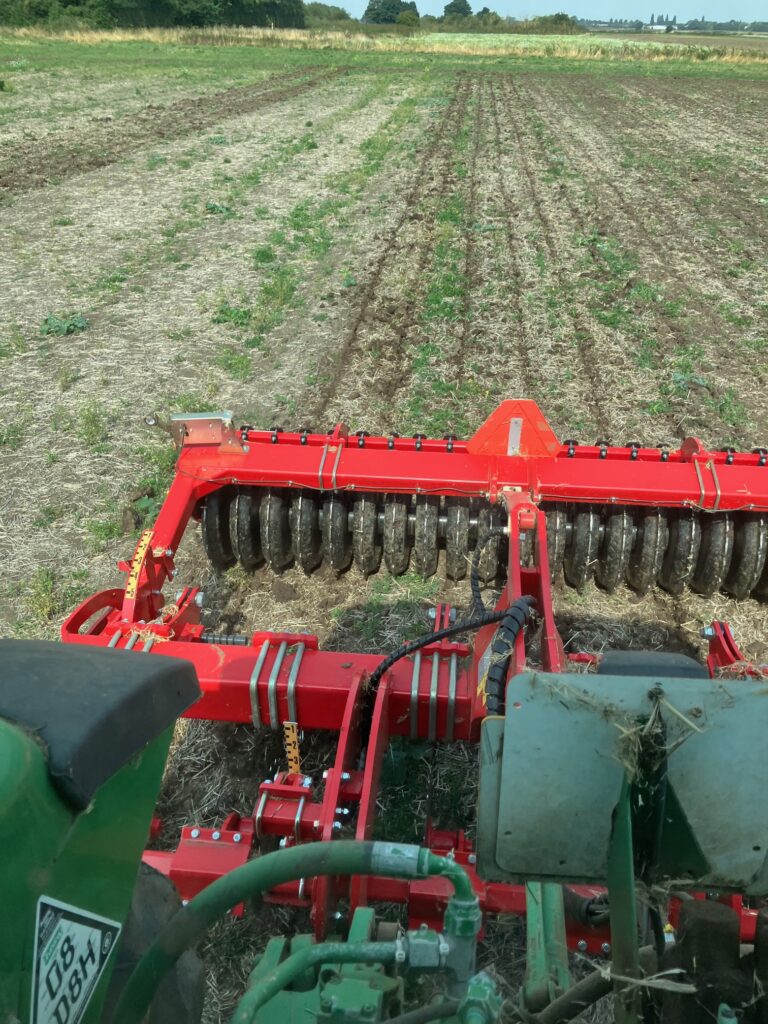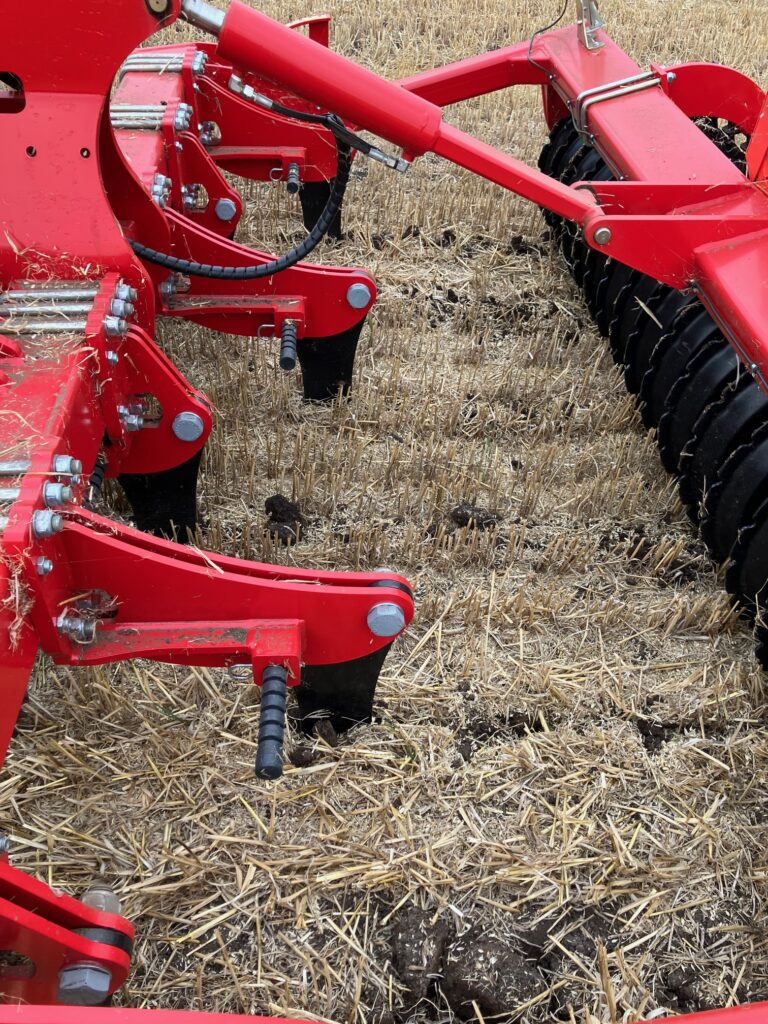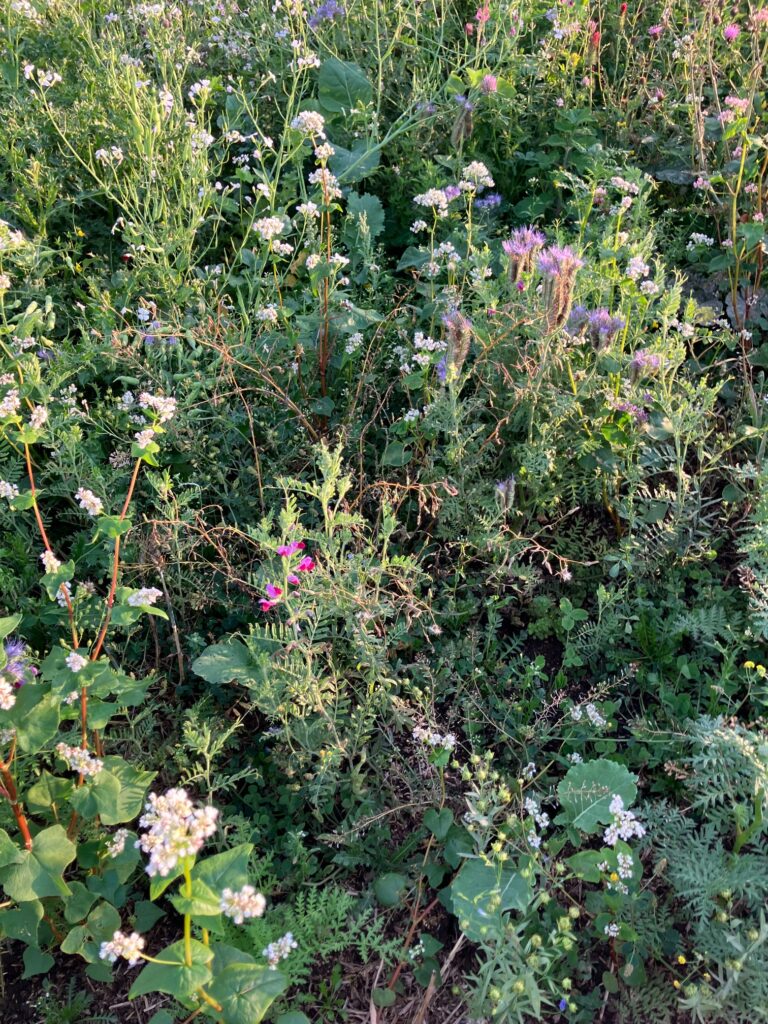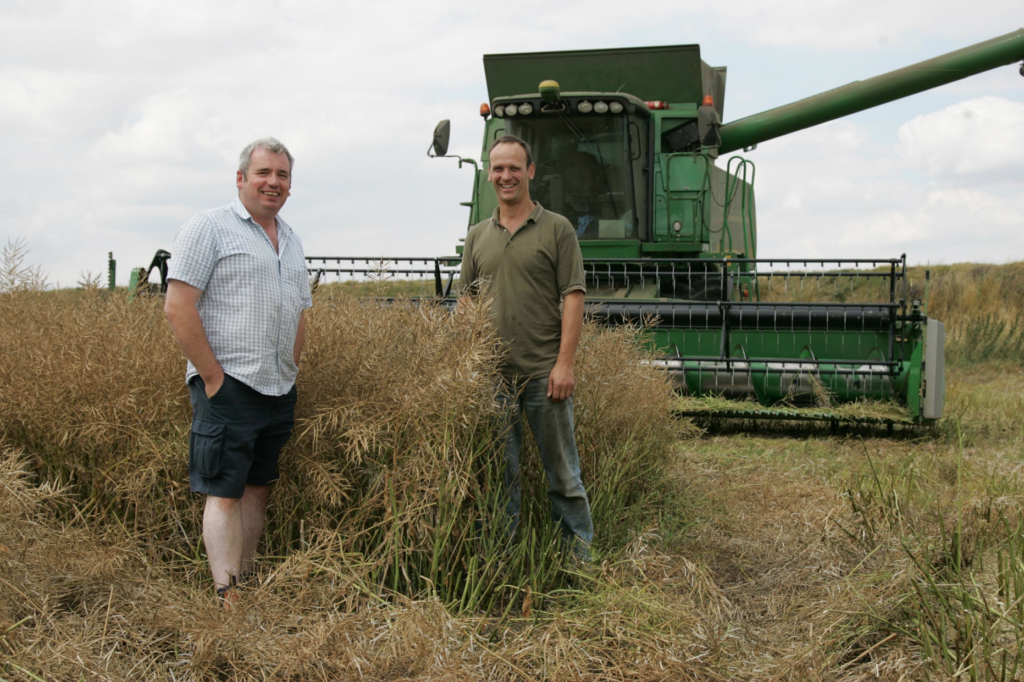September 2024
A year since my last article here and it has been an interesting period.
With our 6m Weaving GD drill we acquired last summer we managed to plant all our planned autumn crops in 2023. The ones following catch crops were easiest travelling on the green, the ones after beans on stubble were more challenging, and everywhere I had a few more blocked coulters than usual due to the wet conditions, and some were later planted than expected.
Generally, they emerged well, but then had to endure months of heavy rain, and our normally well-functioning soils had areas that struggled due to waterlogging this year.
In the spring we planted our mustard crop, and this struggled due to more heavy rain, and incredible pigeon pressure. Normally I have peas growing around the farm by neighbours which draw the pigeons away from our mustard in the spring, but with no peas nearby this year our already struggling mustard suffered horribly, despite huge efforts to protect it.
We also planted our new Sustainable Farming Incentive (SFI) options in later spring. The extra grass strips and wild bird seed plots did well, but the Pollinator mixes were very variable. Some were good, but other areas struggled for various reasons. We re-drilled the worse areas which has a cost, but they have looked fabulous through the late summer.
As summer progressed, our first wheats seemed to grow well despite the previous wet time and approached harvest looking decent. The second wheat was less impressive and for the first time since we started growing it regularly it looked poor compared to the first wheats.
The mustard continued to disappoint, and we wrote off one field after minimal expenditure and left it as a cover crop, and we also wrote off 3 ha of another field, taking the opportunity to clean up some blackgrass, and then plant a late summer flower mix which has been a joy to see, and adds rooting diversity to the soil.


Jayne and I had a fabulous few days in our camper van at the excellent Groundswell Show in June. We met up with friends old and new, and enjoyed some amazing seminars, as well as the evening entertainment!
Harvest started with the Winter Barley trial plots which are time consuming, with the associated sampling and yield data recording. We then made a start on wheat with our small area of second wheat, all Extase. As I feared it was not great, only yielding a little over 6t/ha which is substantially lower than our usual 9-10 t/ha.
We then moved onto first wheats, Extase which scraped 10t/ha, followed by Skyfall at 9.25 t/ha and lastly the Zyatt which also just nudged 10 t/ha. With our below average yields, one might expect amazing proteins, but these were inconsistent with some lower than our normal.
With the difficult wet conditions early in the crops life we should probably be happy with a slightly below average harvest, but it was disappointing, with only a few loads at full milling specification. Thankfully our low cost, reduced input system helps to maintain margins.
We again did a tramline trial of nitrogen use on some first wheat Extase, with a total N applied varying from 104kg/ha down to just 7kg/ha. The yields (Full Combine Header) varied from 11.35t/ha down to 10.34t/ha with the protein also decreasing slightly with the reduction in N use. This is not surprising, but different to last year’s result.
This is not a proper replicated trial, but it does suggest we can achieve a respectable yield with lower Nitrogen use, but there is a margin over cost if we stick to near the farm standard of 100-120 kg/ha, which is lower than we applied some years ago. It is also possible that in a year of crop stress when uptake is reduced and less efficient, we should have added another foliar N dose to help with yield and especially proteins.


The mustard of course was a disappointment, although not surprising. I cut more of it than I expected, but it is not as good as last year.
I pressed on after harvest and quickly planted some more pollinator mixes and catch/cover crops. Some have come well with rain soon after drilling. Field inspections showed that most fields have some compaction at 150-200mm depth due to the weight and effect of the rain.
I have therefore been loosening most of the farm with the Low Disturbance Subsoiler bought last year. I am still a fan of our paraplows, but with a lot to do, and with the new machine having a built in packer it has been the soil loosener of choice this year.
I would like to finish with a tribute to a good friend and colleague, Andrew Jacobs, who sadly passed away following a Cardiac arrest just a few days after his 61st birthday in July.
He was well known in farming circles having been a chairman and board member of various organisations, and loved his rugby and golf, and of course his family.

We worked together for over 20 years, initially as a machinery sharing arrangement, and latterly he was my contractor on the land away from our Whittlesey farm. We were different in our approach sometimes, but we enjoyed a fantastic working relationship and became great friends.
We ventured into No till together with demonstrations of various drills about 10 years ago, and he bought a Weaving Big Disc and started doing some No till establishment for both of us from around 2014. He was an early adopter of strip tillage, investing in a Sly Strip Cat machine and has been using it for over 10 years to prepare land for Sugar Beet, and as a drill for Mustard and Oilseed Rape.
His farming legacy will continue in the capable hands of his wonderful family but all of us who knew him will miss him terribly. RIP Andrew.


